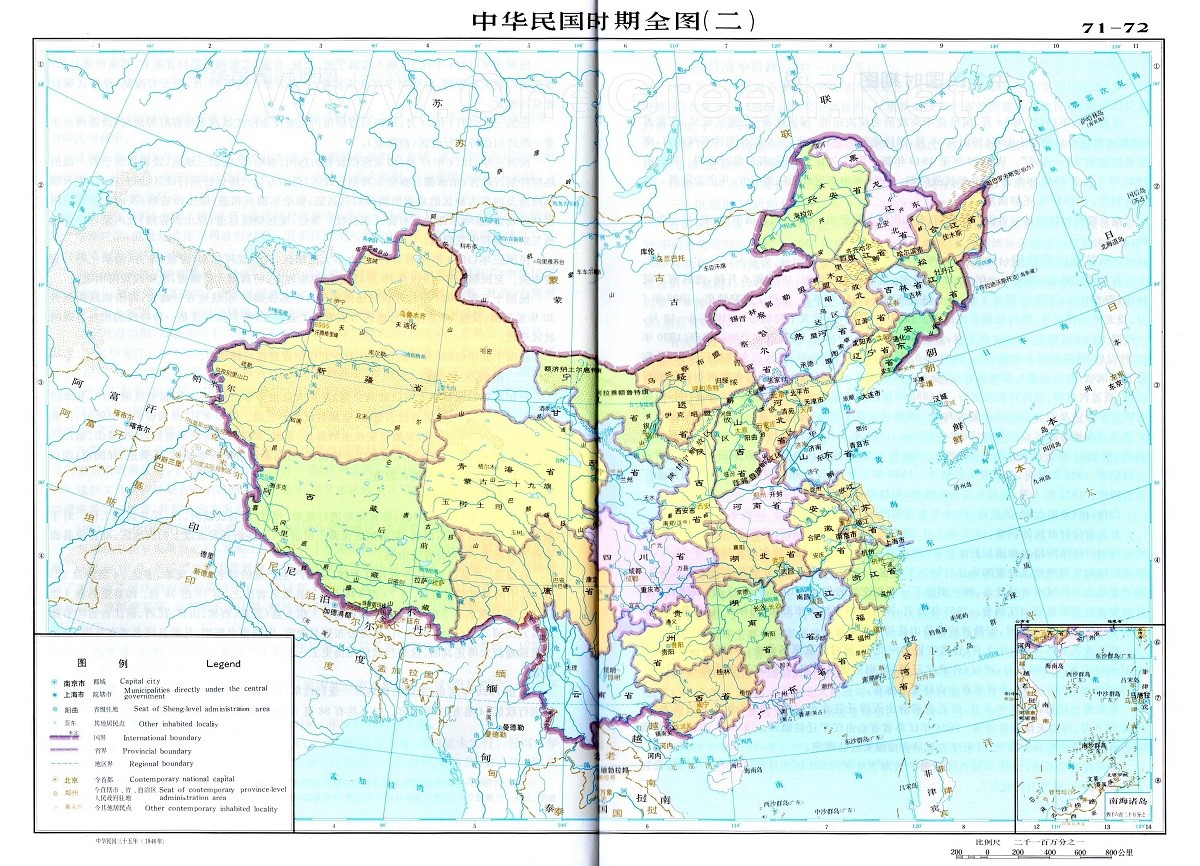
After the Sino Japanese War of 1895, the Qing government was forced to sign the Treaty of Shimonoseki with Japan, which was humiliating and humiliating. The treaty stated that Taiwan Island and its affiliated islands and the Penghu islands would be "ceded to Japan forever". Since then, Taiwan has become a colony of Japanese imperialism.
In 1943, the leaders of the United States, Britain and China jointly signed the Cairo Declaration in Cairo, which made it clear that "the territory stolen by Japan from China, such as the four northeastern provinces, Taiwan and the Penghu Islands, should be returned to the Republic of China".
In 1945, the Second World War ended with the victory of the allies, and the Japanese imperialist invasion of China ended. On September 9, the commander-in-chief of the Japanese invasion of China, Ningji Okamura, submitted a letter of surrender to the Chinese policy in Nanjing.
According to the requirements of the Potsdam Proclamation, the Japanese colonial power and military forces must withdraw from Taiwan and the Penghu Islands. Taiwan, which had been ruled by Japan for 50 years, was finally able to return to China, and the Nanjing national government immediately began the return of Taiwan's political power.
On September 14, Zhang tingmeng, commander of the first route army of the Kuomintang air force, flew to Taipei. Taipei Songshan Airport replaced the Japanese flag with the Chinese flag. After 50 years, the Chinese flag was raised on Taiwan island again.
On the morning of October 25th, 1945, in the Taipei public hall, Chen Yi, the commander-in-chief of the Kuomintang Taiwan garrison, received the letter of surrender from the former Japanese governor in Taiwan, reiji Ando, and then announced: "from today on, Taiwan and the Penghu Islands will officially re-enter the territory of China!"
On January 12, 1946, the national government issued an order: "from October 25, the 34th year of the Republic of China (1945), all (Taiwanese) will be restored to Chinese nationality." The people of Taiwan were officially restored to be part of the Chinese family, and October 25 was designated as "Taiwan recovery day".
After the recovery of Taiwan, Chiang Kai Shek placed high hopes on Taiwan's development. He directly appointed Chen Yi, who had the dual identity of fellow countryman and confidant, as Taiwan's first chief executive, to oversee the administrative and military affairs of Taiwan Province, and gave him higher political and economic autonomy than other provinces.
In January, 1949, with the end of the Pingjin campaign, the victory or defeat of both sides of the civil war between the Kuomintang and the Communist Party had been decided. Chiang Kai Shek had to plan for his retreat, and retreating to Taiwan became his final choice. He arranged for Jiang Jingguo to secretly transport $500million worth of gold, US dollars and other assets of the central bank and nearly 250000 pieces of national treasures of the Palace Museum in Beijing to Taiwan, and then sent a large number of military supplies, a large number of Kuomintang military and political dignitaries and their families to Taiwan one after another.
Chiang Kai Shek, who was about to leave the mainland, was not reconciled to this failure. In May 1949, he visited Taiwan personally and planned Taiwan's defense plan and the future counter offensive idea of "building Taiwan, Fujian and Guangdong, controlling Guangdong and Guangxi, and opening up Sichuan and Yunnan".
On December 10th, 1949, Chiang Kai Shek fled from Chengdu to Taipei in a hurry, and he never returned to Chinese Mainland.
In terms of Navy, the Chinese people's Liberation Army in 1949 was not only far from the strength of the U.S. Navy at that time, but also slightly inferior to the Kuomintang Navy in Taiwan. With the help of the United States, the Kuomintang air force, which fled to Taiwan, also has strong strength and sufficient sea and air control. The U.S. government not only made great political and military assistance, but also sent a powerful seventh fleet to cruise the Taiwan Strait to block the liberation of Taiwan by the Chinese people's Liberation Army.
In 1950, on the Korean battlefield, the Chinese people's volunteer army launched a fierce confrontation with the US military, forcing China to postpone its plan to liberate Taiwan.
Since then, the Taiwan issue has become a legacy of history. Chinese Mainland hopes that Chiang Kai Shek in Taiwan can put national righteousness first and realize the return of Taiwan in a peaceful way.
It has been more than 70 years since the KMT lost and fled to Taiwan, and great changes have taken place in Taiwan itself, but the shadow hovering on the island more than 70 years ago still lingers.